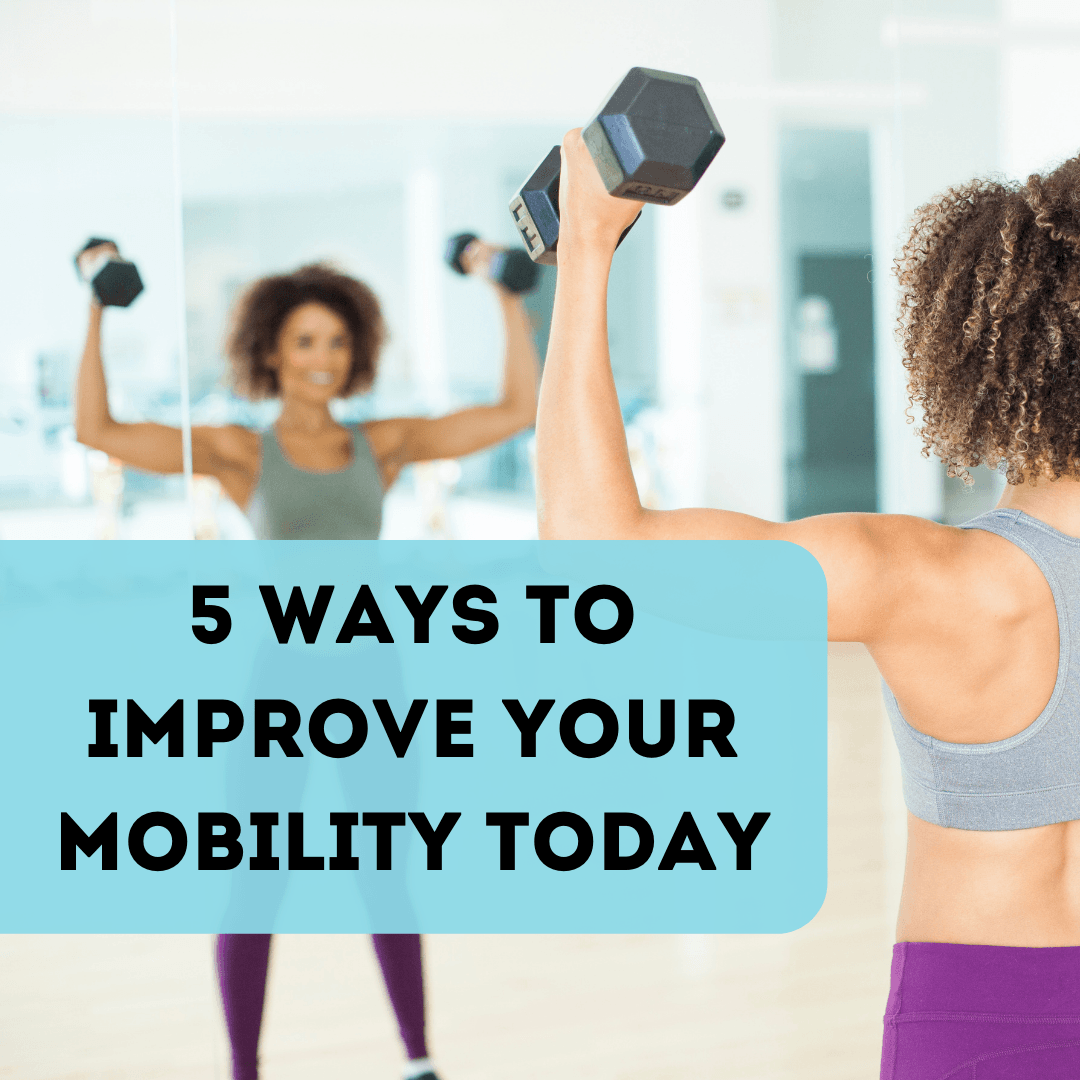
5 Things You Can Start Doing TODAY to Improve Your Mobility
Share
In the last few years, mobility has become a trending topic in recent news among social media influencers. Why? If you’ve ever had the unfortunate experience of recovering from surgery or sprained ankle or even a fall, you understand why mobility is important. Walking, cooking, heading to your favorite exercise class, even things like showering or washing your face can become difficult when mobility is compromised.
While we can’t prevent every accident, we can proactively support our bodies through a balance of movement & conscious food choices. Here are 5 things you can start doing today to improve your mobility everyday!
Stretch Regularly
Stretching is one of the simplest and most effective ways to improve your mobility. It's also a great way to warm up before you exercise, or even just for general health and wellness.
Stretching is something you can do anywhere at any time, so don't be afraid of getting started!
Pro Tip: Try 2-3 minutes of stretching first thing in the morning to help wake your body up. Keep it simple! Start with neck rolls side to side. Circle the wrists and ankles. Bring your arms over head, lock fingers and tilt your torso side to side. Never do a stretch that causes pain, this should feel good!
Dynamic stretching is recommended over static stretching because it involves moving through a full range of motion while maintaining good form. Dynamic stretches should be done slowly (about 1 second per movement), with control and precision--don't bounce!
Dynamic stretches include lunges, squats, arm circles and leg swings. These exercises will help improve your balance as well as increase blood flow throughout the body which promotes better recovery after workouts or intense physical activity like running long distances or playing sports.
If you're interested in improving your overall fitness level but aren't sure where to start then try taking a beginners yoga class at your local gyms or fitness center. There are also tons of free stretching classes available on youtube for beginners.
Get Enough Sleep
If you want to be more mobile, it's important to get enough sleep. A good rule of thumb is to get 7-8 hours per night. You can also improve your mobility by setting a consistent sleep schedule and avoiding screens and caffeine late at night.
If you're having trouble sleeping, try these tips:
- Avoid using electronics before bedtime (including laptops, tablets, smartphones). The blue light from these devices can make it harder for your body to produce melatonin--the hormone that helps regulate your circadian rhythm (aka "body clock"). This makes it harder for you to fall asleep at night and wake up feeling rested in the morning!
- Don't eat heavy meals within two hours of going to bed; instead opt for lighter fare like yogurt or soup if hunger strikes while winding down before bedtime. Eating too much will leave extra calories stored as body fat rather than used as energy during exercise sessions later on in life so try not eating anything after 6pm unless absolutely necessary (like if someone invites over dinner).
Incorporate Strength Training Into Your Routine
If you're looking to improve your mobility, strength training is an important part of the equation. Strength training helps build muscle and bone mass, which can help prevent injuries and improve posture.
To get started with weightlifting, try incorporating full-body movements into your routine--like squats and lunges--and use resistance bands as an alternative if you don't have access to weights or machines at home or in the gym.
Not sure how to get started? Body weight exercises are the BEST place to start for strength training. Start with 5 leg squats, 5 lunges, 5 push ups and build from there! You don’t have to be perfect, you just need to start!
Increase Your Cardiovascular Endurance
One of the most important things you can do to improve your mobility is to increase your cardiovascular endurance. This will help you maintain a healthy weight, which in turn will help prevent injury and keep you active as you age.
To start, try adding running or biking into your routine on a regular basis--even if it's just once or twice per week for short sessions at first. As with any new exercise plan, start with very small amounts of time (5-10 minutes) and build up over time as needed until you're able to comfortably work up to 30-45 minutes per session.
Pro Tip: If you can quite run just yet, start by making walking part of your routine. A great goal to strive for is 10,000 steps per day! This can easily be tracked with most fitness trackers and cellular devices.
Start Adding Glucosamine To Your Diet
Glucosamine is a naturally occurring substance found in your body. It's made from glucose and amino acids, which are two of the building blocks of proteins. Glucosamine helps with joint health by supporting cartilage production, which keeps joints flexible and healthy.
Glucosamine works by stimulating chondrocytes--the cells that make up cartilage--to produce more collagen (a protein) than normal. This causes them to grow bigger, stronger, and healthier over time. As your chondrocytes grow larger and stronger they become better able to withstand pressure on your joints without being damaged or worn down by use over time; this helps reduce pain associated with arthritis while also improving mobility!
The supplement is typically sold in tablets and capsules, and is often included with other supplements that may be effective for pain. It is OK to take glucosamine every day, but always check with your healthcare provider before starting anything new.